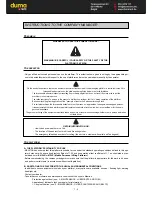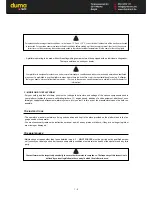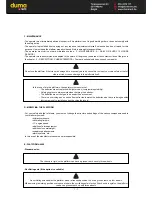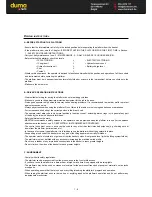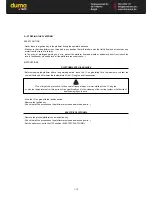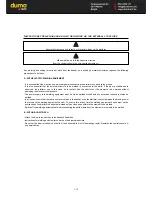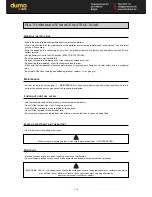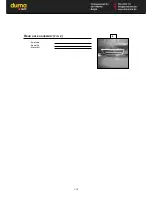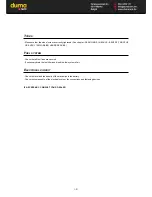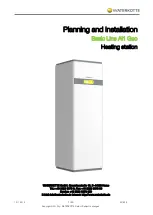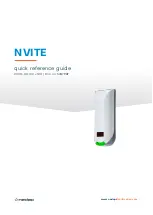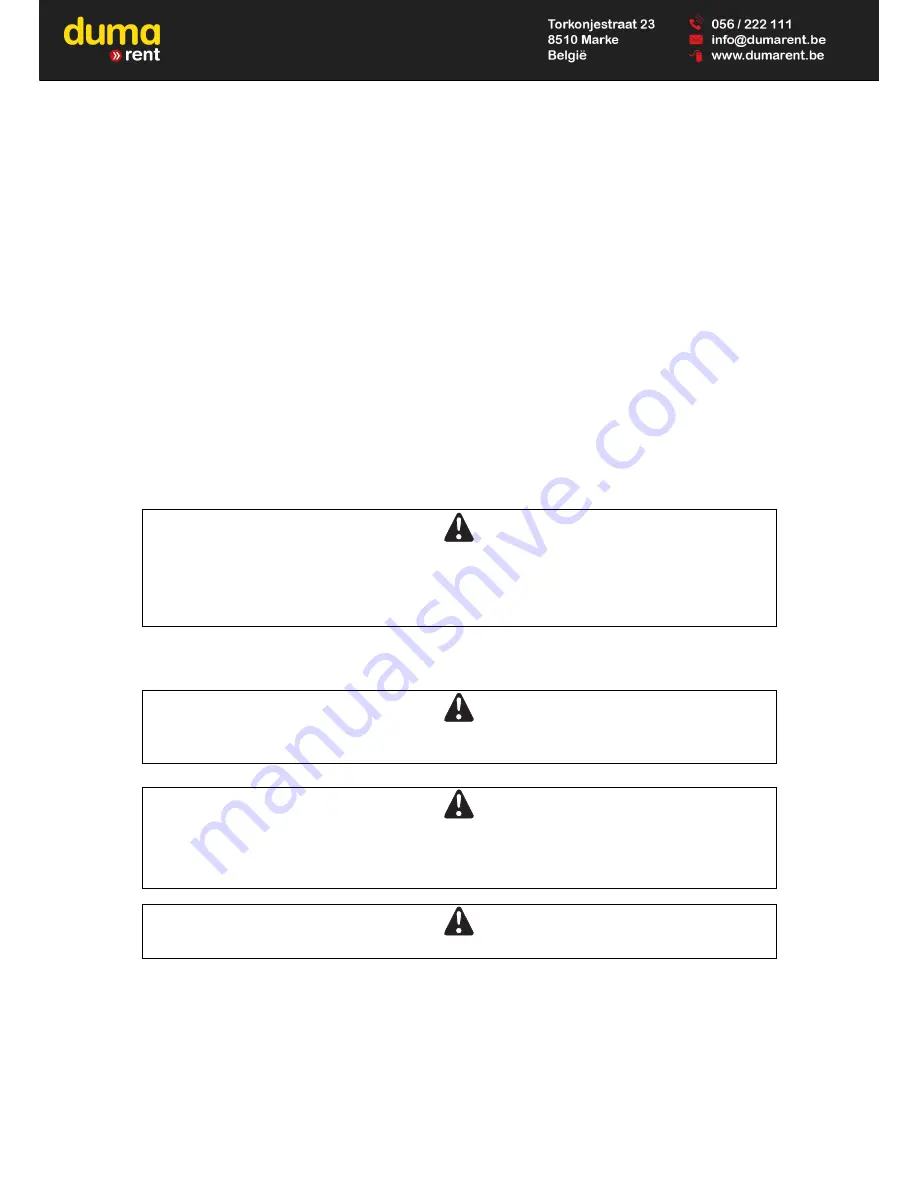
1 - 9
- Do not allow anybody to come near the working area of the platform or pass beneath an elevated load. To do this,
mark your operating area with warning signs.
- Travelling on a longitudinal slope :
• Ensure that you adapt the platform’s travelling speed by controlling the speed with the travelling manipulator.
- Take into account the platform’s dimensions and its load before trying to negotiate a narrow or low passageway.
- Never move onto a loading platform without having first checked :
• That it is suitably positioned and made fast.
• That the unit to which it is connected (wagon, lorry, etc.) will not shift.
• That this platform is prescribed for the size and the total weight of the platform.
• That the slope is not greater than the platform’s maximum authorised slope.
- Never move onto a foot bridge, floor or freight lift, without being certain that they are prescribed for the weight and size
of the platform to be loaded and without having checked that they are in sound working order.
- Be careful in the area of loading bays, trenches, scaffolding, soft land and manholes.
- Ensure that the ground or floor under the wheels and/or the stabilizers is stable and firm before raising the basket. If
necessary, add sufficient wedging under the stabilizers.
- Do not attempt any operations outside the plarform’s capabilities.
- Ensure that the materials on the platform (pipes, cables, containers, etc ...) cannot slip off and fall. Do not heap up
these materials to the pint where you have to step over them.
If the basket must remain stationary over a structure for a long period, there is a risk that the basket will rest on this
structure because of the oil cooling in the cylinders or a minor leak in the cylinder locking system.
To eliminate this risk :
- Regularly check the distance between the basket and the structure and re-adjust if necessary.
- If possible use the platform at an oil temperature as close as possible to ambient temperature.
- In the case of work near aerial lines, ensure that the safety distance is sufficient between the working area of the
platform and the aerial line.
You must consult your local electrical agency. You could be electrocuted or seriously injured if you operate or park the platform too
close to power cables.
If the platform comes into contact with electric wires, press the Emergency Stop button.
If you can, jump from the basket without simultaneously being in contact with the basket and the ground.
If not, call for help, wam people not to touch the basket and to switch off the power supply to the wires or have it
switched off.
If the wind is in excess of 45Km/h, do not make any movements putting the platform’s stability at risk.
D - VISIBILITY
- Maintain permanently good visibility throughout the route. To increase your visibility, you can move forwards with the
pendular arm slightly raised (pay attention to the risk of falls in the basket from knocking into a low doorway, overhead
electric wires, travelling cranes, highway bridges, tracks or any obstacle in the area in front of the platform). In reverse,
look directly behind you. In any case, avoid reversing over long distances.
- If visibility of your road is inadequate, ask someone to help, standing outside the area in which the platform will be
moving, and make sure you always have a good view of this person.
Summary of Contents for 160 ATJ
Page 2: ......
Page 4: ......
Page 6: ......
Page 7: ...1 1 1 OPERATING AND SAFETY INSTRUCTIONS 1 OPERATING AND SAFETY INSTRUCTIONS...
Page 8: ......
Page 25: ...1 19 REAR AXLE ASSEMBLY FIG E Axle type Serial Nr Maker s N E...
Page 28: ...1 22...
Page 29: ...2 1 2 DESCRIPTION 2 DESCRIPTION...
Page 30: ......
Page 31: ...2 3...
Page 37: ...2 9...
Page 39: ...2 11...
Page 41: ......
Page 74: ...2 46 MAIN DISTRIBUTOR Basket rotation Turret rotation Steering Pendular arm Tilt compensation...
Page 75: ...3 MAINTENANCE 3 MAINTENANCE...
Page 76: ......
Page 78: ......
Page 105: ...3 31...
Page 107: ...3 33 G3 2 Centre of gravity Platform s total weight 8090 Kg...
Page 111: ...4 ELECTRICITY 4 ELECTRICITY 4 1...
Page 112: ...4 2...
Page 114: ...4 4...
Page 115: ...5 1 5 OPTIONAL ACCESSORIES FOR THE RANGE 5 OPTIONAL ACCESSORIES FOR THE RANGE...
Page 116: ...5 2...
Page 120: ...5 6...
Page 121: ...6 1 6 MAINTENANCE HANDBOOK 6 MAINTENANCE HANDBOOK...
Page 122: ......
Page 130: ......
Page 131: ...Powered by TCPDF www tcpdf org...










